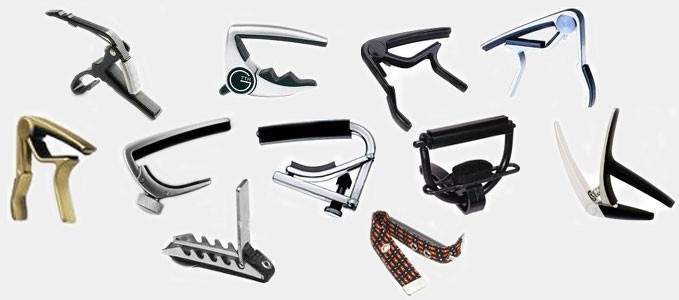How to Use a Capo
Using a capo is seen by some as "cheating", which is a silly way to think. The only aim (in my opinion) is to make nice music, and capos make that a lot easier to do in many instances ...▼
Because of the tuning and design of the guitar, some keys are easier to get around than others. We twangers do like the jangling sound of open strings, but keys like F#, G#, A#, C# and D# consist of chords that have no open positions. They also require us to play endless barre chords in a typical progression, which (lets face it) no one really enjoys doing, especially if you're just starting out. The way around it? Whack on a capo, and play the same progression using familiar, friendly and open chord shapes. Capos come in many shapes and designs, but they're all just clamps that act as a moveable nut.
Below are just a few of the many types. I've pretty much tried them all and they all have their pros and cons. I prefer the kind that are designed to come right down on the fret wire, or very close to it, because they don't exert any downward pressure on the strings. The kind that are designed to clamp behind the fret wire do tend to add tension to the strings, sending them slightly sharp and throwing the tuning out. You don't really want to be re-tuning every time you clamp one on, and tuning with a capo clamped on is dicey anyway.


Join Our Free Trial
Get started today before this once in a lifetime opportunity expires.
